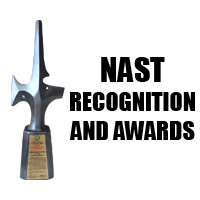The National Academy of Science and Technology, Philippines (NAST PHL) through its Agricultural Sciences Division, held the Roundtable Discussion on Livestock Nutritional Biotechnology: Pre and Probiotics in Food Animals on May 11, 2015 at Hotel Jen Manila. The RTD focused on the hazards of the long-term consumption of meat and meat products with antibiotic residues and the use of pre and probiotics as alternatives in animal food production.
Dr. Soo-Ki Kim, professor at the Department of Animal Science and Technology, College of Animal Bioscience and Biotechnology, Konkuk University, Seoul, South Korea, discussed the pre and probiotics and their application in food animal production. Dr. Soo-Ki stated that the use of antibiotics is already banned in the European Union in 2003 and South Korea in 2011. The ban challenged the development of alternative methods to control pathogenic bacteria. Potential alternatives to antibiotics are probiotics, enzymes, immune modulators, organic acids, and herbs. According to Dr. Soo-Ki, pre and probiotics are used in animal production for the improvement of animal productivity, reduction of environmental pollution, and production of designed animal food. He suggested areas for future research, which include safety of animal probiotics and verification of efficacy of probiotics, among others.
Dr. Loinda R. Baldrias, dean of the College of Veterinary Medicine, University of the Philippines Los Baños, discussed antibiotic residues in meat and meat products and their implications to human health. She discussed the benefits of using antibiotics in animal production to the producers (production efficiency), consumers (affordability and improved quality), and animals (improved health). However, excessive antibiotic use in animal production causes antibiotic residues that may lead to antimicrobial resistance in consumers.
According to Dr. Baldrias, antibiotic residues may be caused by the following: giving antiobiotics to animals without availing of proper veterinary services, the non-observance of withdrawal period (time between the disappearance of drug effects and the point at which the drug concentration in the animal reaches the “safe” level, improper dosing, and emergency slaughter and sale of treated animals without certification of treatment, among others. She suggested promoting awareness among producers of antibiotic resistance and heightened surveillance through regular mandatory testing to help address the issue of antibiotic resistance.
Dr. January M. Nones, officer-in-charge, Laboratory Division, National Meat Inspection Service (NMIS), discussed the current status of antibiotic usage and residue monitoring in the Philippines. Dr. Nones gave an overview of the programs under the National Meat Inspection Service (NMIS) and the National Veterinary Drug Residue Monitoring Program (NVDRMP). She talked about the analytical methods for residue control and the results of their screening test methods, such as the microbial inhibition test (MIT) and enzyme-linked immunosorbent assay (ELISA).
Dr. Minda S. Manantan, executive director of NMIS, explained the limitations of their programs and suggested ways on how to address regulatory enforcement issues. She recommended strengthening the coordination among partner agencies to ensure regulatory action and method development that would strengthen the regulation of banned drugs and monitoring of the proper usage and withdrawal of regulated drugs.
Dr. Davino P. Catbagan, assistant secretary for Livestock of the Department of Agriculture (DA), discussed the regulation and policies on the use of antibiotics in food animals in the Philippines. He talked about the legal bases for the regulation of the use of antibiotics, which included various republic acts and administrative orders.
Implementing agencies in the regulation of veterinary drugs and products (VDAP) are the Food and Drug Administration (FDA), Department of Health (DOH), and the Bureau of Animal Industry (BAI). Dr. Catbagan discussed the importance of and the different requirements in labeling, promoting, and advertising of VDAP.
Dr. Edwin C. Villar, director of the Livestock Research Division, Philippine Council for Agriculture, Aquatic, and Natural Resources Research and Development (PCAARRD), gave a comprehensive synthesis of the discussions, while Academician Libertado C. Cruz served as the focal person of the RTD. (Aislynn Fabiola G. Manuel)











